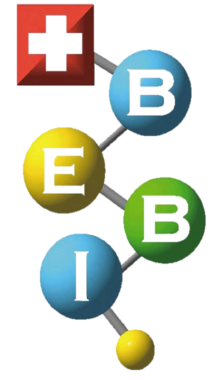研究主題:探究放射治療的組合策略以促進治療成效
撰寫:學生曾子洋
膀胱癌屬泌尿系統的常見惡性疾病,並且較好發於中高齡男性,而當癌症細胞自膀胱黏膜層延伸侵犯至肌肉層,則在臨床上被歸類為肌肉侵犯型膀胱癌(Muscle-invasive bladder cancer, MIBC)。而關於這類膀胱癌的治療方式除直接透過手術切除、化療外,也會透過放射治療(Radiation therapy,RT)來治療。但先前的研究發現透過放射治療治療肌肉侵犯型膀胱癌可能會因為腫瘤相關巨噬細胞(Tumor-associated macrophage,TAM)的參與以促進癌症細胞的轉移,於是成教授與其團隊則希望可以深入研究放射治療與腫瘤相關巨噬細胞間的作用關係,以解開兩者之間非預期促進轉移的作用機制,來提升放射治療的效用。
成教授與其研究團隊為探討接受放射治療的膀胱癌細胞與腫瘤相關巨噬細胞的交互作用,他們首先建立了異位移植小鼠模型來評估放射治療的效果,他們發現局部的放射治療有助於抑制小鼠的腫瘤生長,但卻也出現了肺部轉移的現象。而為了探究膀胱癌細胞與腫瘤相關巨噬細胞的相互作用關係,他們使用Transwell共培養系統來模擬體內環境,透過該實驗系統,他們發現在經過放射線照射的膀胱癌細胞會增加CCL2的分泌,連結到腫瘤相關巨噬細胞上的CCR2受體,促使其自具有抑制癌症生長的M1類型巨噬細胞(M1-type TAM),轉變成具有抑制免疫系統功能、促進癌症細胞生長的M2類型巨噬細胞(M2-type TAM),使膀胱癌細胞可以躲過免疫系統的侵襲,並且轉移至其他器官。最後成教授的團隊也透過加入CCR2拮抗劑,阻斷CCL2-CCR2的活化。他們發現此方法可以有效阻止腫瘤相關巨噬細胞自M1類型轉變成M2類型,並且也抑制肺部的癌症轉移。綜合以上實驗成果,成教授發現增加CCL2的表現是膀胱癌細胞對放射治療的反應之一,非預期增加了M2類型的腫瘤相關巨噬細胞來創造免疫抑制的環境,使癌症細胞可以更不受免疫系統控制,也促進其轉移潛力,這個理論提供臨床治療膀胱癌時,使用放射治療必須注意避免的非預期現象 [1]。
除上述的研究成果外,成教授也致力於肝癌的相關研究。近期成教授的一篇研究成果中發表了放射治療與組蛋白去乙醯化酶抑制劑(Histone deacetylase inhibitor,HDACi)的合併使用有助於提升抗癌作用的潛在原因。成教授透過小鼠模型與體外細胞培養的實驗發現放射線結合HDACi的治療策略可以增加肝癌細胞中NKG2D配體的表達,來使得他們會更容易受到自然殺手(Natural killer, NK)細胞的標定與胞殺 [2]。另一篇綜合隨機分組大型研究資料的統合分析,發表探討單一靶向治療(Targeted monotherapy)、結合靶向治療(Targeted drug)與免疫療法(Immunotherapy)對於手術無法切除的肝癌病患之影響,他們發現相較於單一靶向治療,結合靶向治療與免疫療法明顯改善了病人的生存率 [3]。
Research Topic: Exploring combination strategies of radiation therapy to enhance treatment efficacy.
Bladder cancer is a common malignant disease in the urinary system, and it is more prevalent in middle-aged and elderly males. When cancer cells extend from the bladder mucosal layer to the muscle layer, it is clinically classified as muscle-invasive bladder cancer (MIBC). In addition to surgery and chemotherapy, radiation therapy (RT) is also used to treat this type of bladder cancer. However, previous studies have found that RT for MIBC may promote cancer cell metastasis through the involvement of tumor-associated macrophages (TAMs). Therefore, Professor Cheng and his team aim to investigate the interactions between radiation therapy and tumor-associated macrophages to uncover the underlying mechanisms that contribute to tumor metastasis and enhance the efficacy of radiation therapy.
Professor Cheng and his research team aimed to investigate the interaction between irradiated bladder cancer cells and TAMs. They first established an ectopic allograft mouse model to evaluate the therapeutic effects of radiation therapy. They found that local RT delayed tumor growth in mice but also led to pulmonary metastases. To study the interaction between bladder cancer cells and TAMs, they used Transwell coculture system to simulate the in vivo environment. Through this experimental system, they discovered that irradiated bladder cancer cells increased the secretion of C-C motif chemokine ligand 2 (CCL2), which bound to C-C motif chemokine receptor 2 (CCR2) on TAMs. This interaction caused the polarization of TAMs from the M1 anti-tumor type to the M2 pro-tumor type, promoting bladder cancer cell invasion and evasion of the immune system. In the final step, Professor Cheng’s team added a CCR2 antagonist to block the activation of CCL2-CCR2. They found that this approach effectively prevented the phenotypic transformation of TAMs from M1 to M2 and inhibited cancer metastasis to the lungs. Based on these experimental findings, Professor Cheng discovered that increased expression of CCL2 is one of the responses of bladder cancer cells to RT, leading to the recruitment of M2-type TAMs and the creation of an immunosuppressive environment that allows cancer cells to evade immune control and enhances their metastatic potential [1].
In addition to the aforementioned research findings, Professor Cheng is also dedicated to conducting the related studies on liver cancer. In a recent research publication, Professor Cheng demonstrated that the combination of RT and histone deacetylase inhibitor (HDACi) could potentially enhance the anticancer effects. Through experiments conducted on mouse models and in vitro cell cultures, Professor Cheng found that the treatment strategy combining RT with HDACi increased the expression of NKG2D ligands in liver cancer cells, making them more susceptible to targeting and killing by natural killer cells [2]. Another publication explored the impact of targeted monotherapy, combined targeted drug therapy, and immunotherapy on patients with inoperable liver cancer. They found that, compared to single-targeted therapy, the combination of targeted drug therapy and immunotherapy significantly improved patients’ survival rates [3].
[1] Chiang, Y., Tsai, Y. C., Wang, C. C., Hsueh, F. J., Huang, C. Y., Chung, S. D., Chen, C. H., Pu, Y. S., & Cheng, J. C. (2022). Tumor-Derived C-C Motif Ligand 2 Induces the Recruitment and Polarization of Tumor-Associated Macrophages and Increases the Metastatic Potential of Bladder Cancer Cells in the Postirradiated Microenvironment. International journal of radiation oncology, biology, physics, 114(2), 321–333. https://doi.org/10.1016/j.ijrobp.2022.06.054 [2] Liu, Y. F., Chiang, Y., Hsu, F. M., Tsai, C. L., & Cheng, J. C. (2022). Radiosensitization effect by HDAC inhibition improves NKG2D-dependent natural killer cytotoxicity in hepatocellular carcinoma. Frontiers in oncology, 12, 1009089. https://doi.org/10.3389/fonc.2022.1009089 [3] Yang, T. K., Yu, Y. F., Tsai, C. L., Li, H. J., Yang, P. S., Huang, K. W., & Cheng, J. C. (2022). Efficacy and safety of combined targeted therapy and immunotherapy versus targeted monotherapy in unresectable hepatocellular carcinoma: a systematic review and meta-analysis. BMC cancer, 22(1), 1085. https://doi.org/10.1186/s12885-022-10174-6
